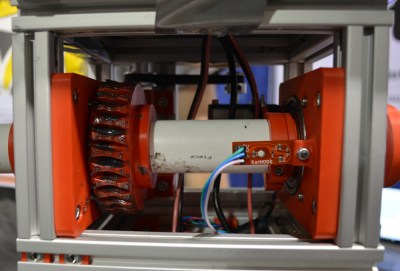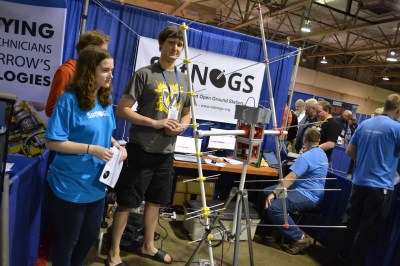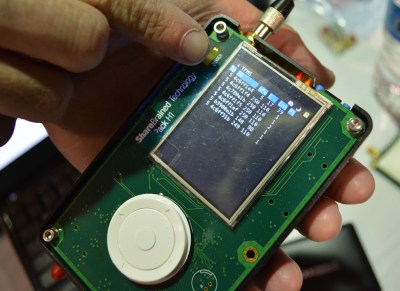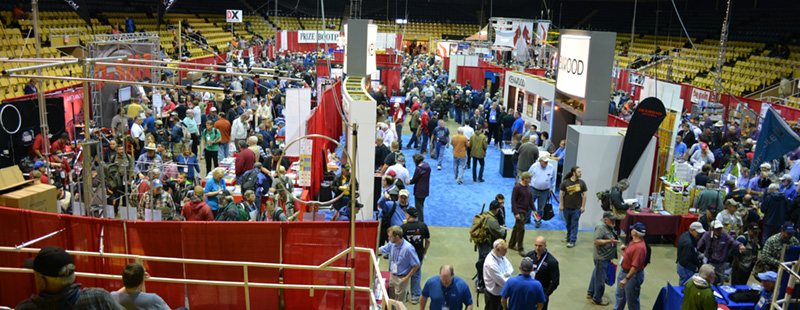Hamvention was last weekend in Dayton, Ohio. Last weekend was also the Bay Area Maker Faire, and if you want tens of thousands of people who actually make stuff there’s really only one place to be. Bonus: you can also check out the US Air Force Museum at Wright-Patterson AFB. The ‘Space’ hangar was closed, so that’ll be another trip next year.
The biggest draw for Hamvention is the swap meet. Every year, thousands of cars pull up, set up a few tables and tents, and hock their wares. Everything from radios from the 1920s to computers from the 1980s can be found at the swap meet. This post is not about the swap meet; I still have several hundred pictures to go through, organize, label, and upload. Instead, this post is about the booths of Hamvention. Everything imaginable could be found at Hamvention, from the usual ARRL folks, to the preppers selling expired MREs, and even a few heros of Open Hardware.
SatNOGS

In 2014, Hackaday did something spectacular. We launched The Hackaday Prize, and gave everyone the opportunity to build Open Hardware with the chance to get paid for the same. The first grand prize winner of the Hackaday Prize was SatNOGS, a global network of satellite ground stations.
SatNOGS was founded after the realization that there are hundreds of cubesats and other amateur satellites being dumped into Low Earth Orbit. Most of these cubesats are from universities, with a few from high schools around the world. Getting data from these satellites requires a ground station, and if each cubesat only has one ground station, that satellite is only usable for a few minutes each day when it passes over home base.
 SatNOGS is the solution to this problem. It’s a relatively simple device – just a few antennas mounted to a motorized platform, and connected to the Internet with a Raspberry Pi or BeagleBone. By connecting antennas around the globe to the Internet, the SatNOGS team can schedule observations for each individual ground station. This means more data and better science for every amateur cubesat.
SatNOGS is the solution to this problem. It’s a relatively simple device – just a few antennas mounted to a motorized platform, and connected to the Internet with a Raspberry Pi or BeagleBone. By connecting antennas around the globe to the Internet, the SatNOGS team can schedule observations for each individual ground station. This means more data and better science for every amateur cubesat.
While most of the SatNOGS team is busy with the Libre Space Foundation, the not-for-profit founded with Hackaday Prize money, there was enough cash to send a few SatNOGS enthusiasts out to Hamvention. [Corey], aka KB9JHU, from Bloomington, Indiana and SatNOGS station number two brought the team out. He’s been running his station for a while, and there are a few takeaways from his experiences in operating a 3D printed, robotic antenna for a few years. Printing parts in PLA works, surprisingly. There really isn’t much degradation of the 3D printed gears. Weatherproofing is relatively easy, but bug-proofing is not. There was talk of bees before I phased out of the conversation after realizing I don’t know if I’m allergic to bees. There are more SatNOGS stations coming online, and there should be reasonable coverage over most population centers by the time the Libre Space Foundation puts their satellite into orbit.
SDR Wizardry From Colorado
Electronic wizard and SDR hipster [Michael Ossman] was at Hamvention, showing off the latest of his SDR goodies.

[Ossmann] is famous around these part for the HackRF One, a software defined radio that’s good from 1MHz to 6GHz. Everything you could ever want is in this band, and the HackRF One transmits, too. He and his buddies were showing off the PortaPack, a ‘shield’, for lack of a better term, for the HackRF One that allows for portable control of the SDR. It’s a display, an old iPod scroll wheel thingy, and a shell to protect everything.
Sometimes you don’t need a good SDR that goes all the way into GHz territory, and for that [Ossmann] has the YARD Stick One. It’s sub-1GHz, based on the IM-Me radio circuit. For the booth demo, the Great Scott Gadgets crew connected a bicycle pump to an MDF box with an acrylic lid. Pop in a tire pressure monitor, and you have an excellent demo for receiving sub-GHz wireless transmissions.

















I missed HaD!! Was looking for the flag all saturday! First time going to hamvention and it was great, at the end of the day youre exhausted. Picked up a Yard stick one and a couple more gadgets. Thanks to all the vendors and people with booths making it great!
I was also there on Saturday!
Picked up a bunch of random parts, I may or may not ever need. ;)
Also made a stop at Mendelsons (downtown location, not the “small” booth they have in the flea market).
I love Mendelsons. When I make it to Hamvention I ususally end up spending quite a bit of time in their tent. I was amazed the first time I saw their actuall store.
And that downtown Mendelson’s store has an old, manually operated elevator that is cool to ride.
Same here. Was looking for the Hackaday flag too. Stopped by SATNOGS and Great Scott too. It was a great event as always, and am planning to venture out there again next year. Bought many a grab bag, and came out a winner with some excellent parts, including some alpha numberic LED’s and some “obscurata” as I like to call it. 73 to all. de KC8VA
Was hoping to see Brian there as well. Did get to see the Tesla vs. Edison arcade game. That was impressive.
Saw Benchoff there! Got some good sticker swag and he ended up coming down to Proto Buildbar. Hamvention was a good time!
If there is ever some “Behind the Scenes” coverage of Tesla vs. Edison it’ll definitely be worth some Hackaday coverage – it is based on some disposable camera flashes and custom made electrodes as joysticks.
http://www.smithsonianmag.com/smart-news/tesla-vs-edison-now-video-game-180958564/?no-ist
I was stuck in the ARRL Education booth most of the time.
I ended up hanging out with Brian at the proto build bar afterwards on Saturday. Talking tech and showing off flea market finds. Looking forward to it next year! Kinda bummed nobody showed up for the meetup.
I did not know there was a meet up.
I would have shown up.
Was looking for a meetup notification too … checked Brian’s Twitter page but saw nothing there. I looked for him all day Sat. but never found him. I was hoping to show him my “hacked” bandaid with the Hackaday skull and crossbones design. ????
Had a great time talking to Ossman’s at Great Scott Gadgets. Also met Audrey, the lady who started Nuts and Volts magazine with her husband in 1980.
The Maestro front end for SDR looked pretty slick. Found some tiny tiny drill bits for $5 and a few other misc parts. My first time to Hamvention, and I attended after reading the first Hackaday article about it. Thanks for all the write-ups, Brian.
Can anyone explain why the yard stick costs 100$ (without case and antenna)?
Other modules that use cc111X family costs ~17$. I’m sure they deserves their profit, but ~80$ above BOM seems to be a high.
https://www.wirelessthings.net/srf-wireless-rf-radio-surface-mount